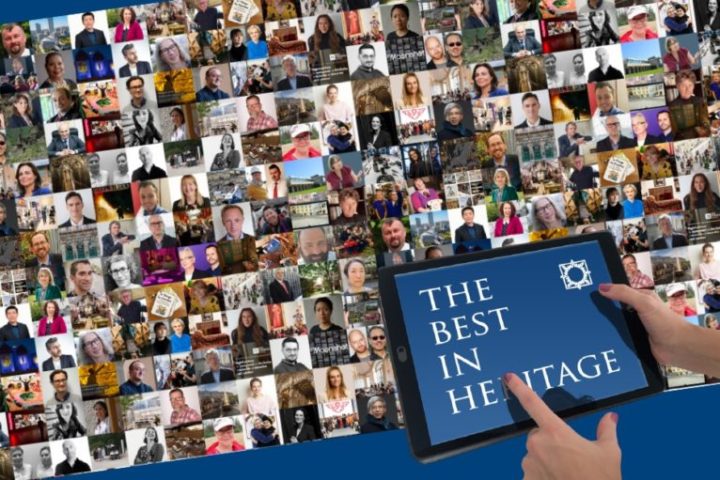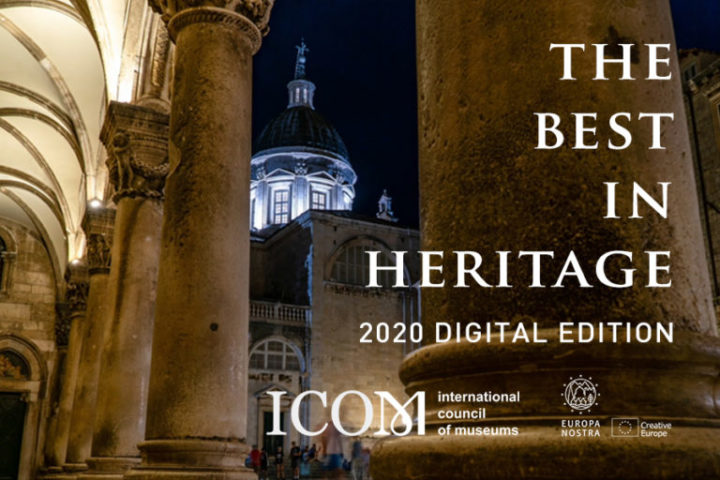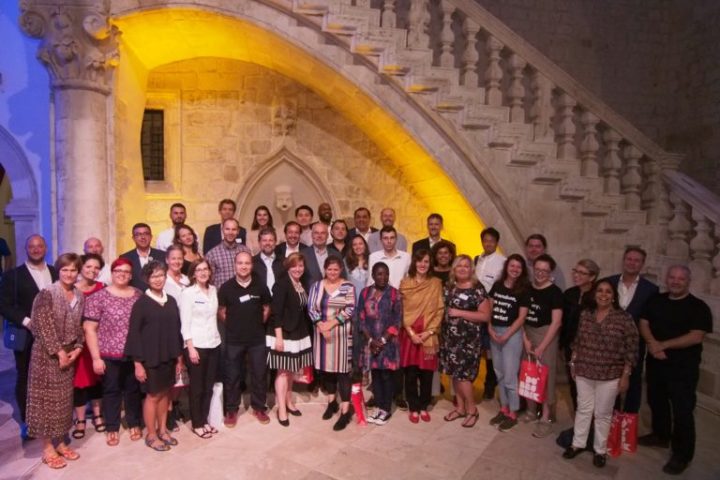The Best in Heritage 2020 edition was a journey that lasted for 3 months and that took us all over the planet.
The 42 interviews with laureates from the past year provided a diverse selection of material for all interested in best practices and innovations in the wide field of cultural heritage and public memory institutions. The series featured talks with prominent laureates from the past year, coming from art to civil rights museums, educational programmes to costume festivals, from national libraries to restored castles, conservation projects to archaeological digs, disrupted exhibitions to vital educational programmes, and covering a vast array of new trends with immersive recreations of historical events and places, interactive visits, wide-reaching social media campaigns and open access collections.
Projects of Influence
Our role is to capitalise on the work of many professional juries by giving further exposure to prize-winning projects, finally choosing those particularly likely to exercise influence and inspiration – the innovators of the heritage sector. The “Project of Influence” title is about quality that attracts attention and impresses, not about the competition per se. The implied claim is that such projects have the potential to produce change and advance professional practices by the power of their inspiration.
2020 IMAGINES & Core programme Juries had a very difficult task. Although all 42 participating projects are already winners, each being awarded in the past year, only 2 are proclaimed as the Best in Heritage “Project of Influence” of the year.
The IMAGINES title of “Project of Influence 2020” goes to the State Library of New South Wales for their project “#NewSelfWales” – presented by Paula Bray. The second place by number of votes is taken by the Fine Arts and Archaeology Museum Besançon for the LIVDEO project – presented by Ciprian Melian. Third by number of votes is ArchAIDE app project, – presented by Gabriele Gattiglia.
Apart from the high quality preparation and execution, the jury was excited the most by the openness of the curatorial team to the unintended consequences of involving the audience in the storytelling, and in particular in welcoming the disruptive approach audiences took to the technology that underpinned the visitor experience. Giving an audience agency in the curatorial end-product creates a completely different kind of experience, one that people are happy to share and enjoy. It is through this sense of play that learning is amplified and the extensive work behind the exhibition can be rendered vivid. – Ivor Crotty, on behalf of IMAGINES Jury 2020
The core programme 2020 “Project of Influence” is Helsinki Central Library Oodi – presented by Harri Annala. Second by number of Jury votes is “Stewards of Cultural Heritage” project by the Archaeological Heritage Network – presented by Moritz Kinzel and Abdulhamid Dihna. And the third place by number of votes goes to the Queen Louise Adit Complex – presented by Magdalena Szczypkowska & Michalina Bieńkowska.
The project demonstrated a systematic involvement of the public right from its inception. The jury was very impressed by this involvement of the community in a project of this scale which continues to play a transformative role in the community. We commend the commitment and dedication as a centre of knowledge that crosses boundaries and works with diverse resources and learning practices. It is at the same time grounded in the past and serving the present, by engaging with the newest achievements of technology. The Jury was impressed by the architecture of the building, as it was conceived with each level designed to address the involvement and participation and how it integrated with the city. – Dr Monisha Ahmed, on behalf of Core Programme Jury 2020
We wholeheartedly congratulate all that took part and especially the holders of the “Project of Influence” titles, whose representatives will next year serve as our Keynote speakers.
Message from Professor Tomislav Šola, Director of The Best in Heritage
This year’s edition demonstrated many tendencies. Technology has widened both the range and the scale of activities. Of central importance is the need to serve communities, place visitor interests at the heart of our work, enable collaborative practice and develop co-curation. Contexts and new insights opened further, while specialist boundaries between different public memory occupations were further blurred. The mission of public memory in wider society reveals the same needs. We are approaching times in which heritage will have to become a guarantee for the survival of identities and values, indispensable for retaining our inherited diversity.
The forward-looking concept of the conference is our best guarantee, that will bring us next year to the 20th anniversary of the conference. Due to our partnerships and support, the conference presents a unique platform where official, private and civil society projects in the heritage sector meet. Thus, the conference offers a rare opportunity of insight into the quality and innovation that the best practices can offer, establishing and promoting the influence of the best among us. Our main partner is the International Council of Museums while Europa Nostra (and Creative Europe) represent the host continent and civil society. So far the conference has been held every September in Dubrovnik, and in 2020, online. Let us hope we all return our activities to in-person mode in 2021.


